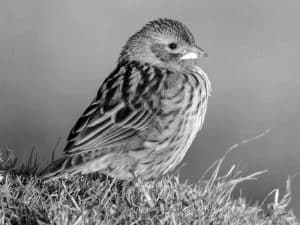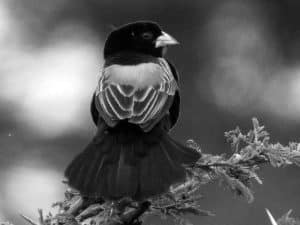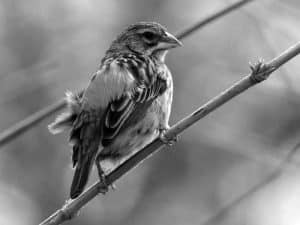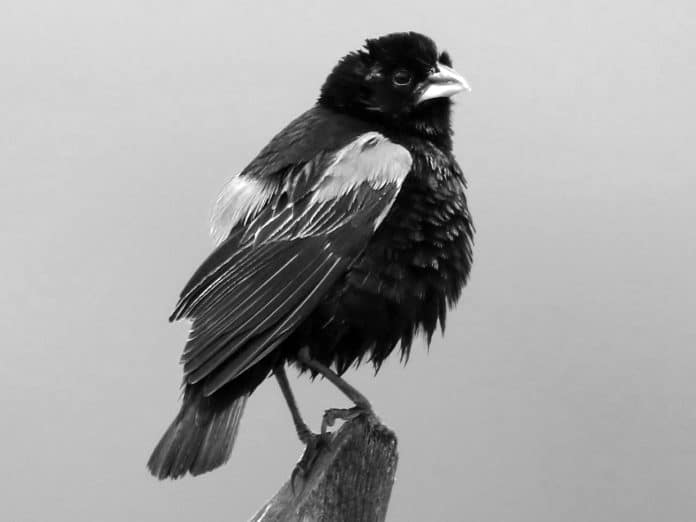Introduction to the Yellow Bishop Bird
The Yellow Bishop, scientifically known as Euplectes capensis, is a captivating and vibrant bird species that can be found in various regions of Tanzania. This stunning passerine bird, belonging to the weaver family, is renowned for its striking plumage and unique breeding behaviors. As you delve into the world of the Yellow Bishop in Tanzania, you’ll be enchanted by its remarkable adaptations, fascinating social dynamics, and the crucial role it plays in the diverse ecosystems of Tanzania.
Habitat and Distribution of the Yellow Bishop in Tanzania

The Yellow Bishop thrives in a variety of habitats across Tanzania, including grasslands, marshes, agricultural areas, and even urban fringes. Its widespread distribution can be attributed to its remarkable adaptability and resilience. In Tanzania, you can find the Yellow Bishop in regions such as the Serengeti National Park, the Ngorongoro Conservation Area, and the Tanzanian coastal regions, among other prime birding hotspots.
Physical Characteristics and Behavior of the Yellow Bishop
The Yellow Bishop is a medium-sized bird, with the males typically measuring around 15-17 centimeters in length. The most striking feature of the Yellow Bishop is its vibrant plumage, which undergoes a dramatic transformation during the breeding season. The males develop a stunning golden-yellow head, chest, and back, complemented by a distinctive black mask and bib. The females, on the other hand, have a more subdued brown and gray coloration, blending seamlessly with their surroundings.
In terms of behavior, the Yellow Bishop is a highly social bird, often seen in large flocks during the non-breeding season. However, during the breeding season, the males become fiercely territorial, engaging in elaborate displays and vocalizations to attract mates and defend their nesting sites.
Breeding and Nesting Habits of the Yellow Bishop
The breeding season of the Yellow Bishop in Tanzania typically coincides with the onset of the rainy season, usually between November and April. During this time, the males engage in a captivating courtship display, fluttering their wings and performing intricate aerial maneuvers to impress potential mates. The females, in turn, carefully inspect the nesting sites and the males’ displays before selecting their mates.
The Yellow Bishop constructs its nests in dense vegetation, such as tall grasses, reeds, or bushes. The nests are woven masterfully, with the males taking the lead in the construction process. The females then lay a clutch of 2-4 eggs, which they incubate for approximately 12-14 days. Once the chicks hatch, both parents share the responsibility of feeding and caring for their offspring until they fledge and become independent.
Conservation Status of the Yellow Bishop
The Yellow Bishop is classified as a Least Concern species by the International Union for Conservation of Nature (IUCN), indicating that its global population is relatively stable. However, like many other bird species, the Yellow Bishop faces various threats and challenges in Tanzania, which require ongoing conservation efforts.
Threats and Challenges Faced by the Yellow Bishop in Tanzania

One of the primary threats to the Yellow Bishop in Tanzania is habitat loss and degradation, driven by factors such as urbanization, agricultural expansion, and overgrazing. The conversion of natural grasslands and wetlands into human-dominated landscapes can significantly impact the availability of suitable breeding and foraging areas for the Yellow Bishop.
Additionally, the use of pesticides and other agrochemicals in agricultural areas can have detrimental effects on the Yellow Bishop’s food sources and overall health. Climate change and its associated impacts, such as changes in rainfall patterns and temperature extremes, can also pose challenges for the species’ long-term survival.
Best Places in Tanzania to Spot the Yellow Bishop
Tanzania boasts numerous prime birding destinations where you can observe the captivating Yellow Bishop in its natural habitat. Some of the best places to spot this species include:
- Serengeti National Park: The vast grasslands and wetlands of the Serengeti provide an ideal environment for the Yellow Bishop, making it a popular destination for birdwatchers.
- Ngorongoro Conservation Area: The lush, diverse habitats within the Ngorongoro Crater and the surrounding highlands offer excellent opportunities to encounter the Yellow Bishop.
- Tarangire National Park: The Tarangire River and its surrounding marshes and grasslands are home to thriving populations of the Yellow Bishop.
- Arusha National Park: This park, situated near the iconic Mount Kilimanjaro, is a haven for the Yellow Bishop and other avian species.
- Coastal regions: The coastal areas of Tanzania, such as Dar es Salaam and Zanzibar, provide suitable habitats for the Yellow Bishop, particularly in wetland and agricultural areas.
Tips for Birdwatching and Photographing the Yellow Bishop
To make the most of your Yellow Bishop sighting and capture stunning images, consider the following tips:
- Timing: The best time to observe the Yellow Bishop is during the breeding season, when the males are in their vibrant breeding plumage and actively engaged in courtship displays.
- Patience and Stealth: The Yellow Bishop is a relatively approachable bird, but it’s essential to move slowly and quietly to avoid startling it.
- Appropriate Gear: Equip yourself with a good pair of binoculars or a high-quality camera with a telephoto lens to capture the intricate details of the Yellow Bishop’s plumage.
- Respect the Environment: Adhere to all park regulations and guidelines to minimize your impact on the delicate ecosystems where the Yellow Bishop thrives.
- Seek Local Expertise: Consult with experienced birdwatching guides or naturalists who can provide valuable insights and increase your chances of spotting the Yellow Bishop.
Interesting Facts about the Yellow Bishop

- The Yellow Bishop is known for its remarkable ability to change its plumage color during the breeding season, transforming from a drab brown to a vibrant golden-yellow.
- These birds are highly social and often form large flocks during the non-breeding season, with up to hundreds of individuals observed together.
- The Yellow Bishop is known for its intricate nest-building skills, weaving elaborate, domed structures with a side entrance.
- In some parts of Tanzania, the Yellow Bishop is considered a pest by farmers due to its tendency to feed on cultivated grains and cereals.
- The Yellow Bishop’s distinctive call, a loud and melodic “chee-chee-chee-chee,” can be heard echoing across the grasslands and marshes of Tanzania.
Conclusion
The Yellow Bishop is a captivating and vibrant bird species that adds to the rich biodiversity of Tanzania. As you explore the country’s diverse habitats, keep an eye out for these stunning creatures, and be prepared to witness their remarkable breeding displays, intricate nesting behaviors, and their crucial role in the delicate ecosystems they call home.
To learn more about the Yellow Bishop and other fascinating bird species in Tanzania, consider joining a guided birdwatching tour or exploring the country’s renowned national parks and conservation areas. Your adventure awaits!

































